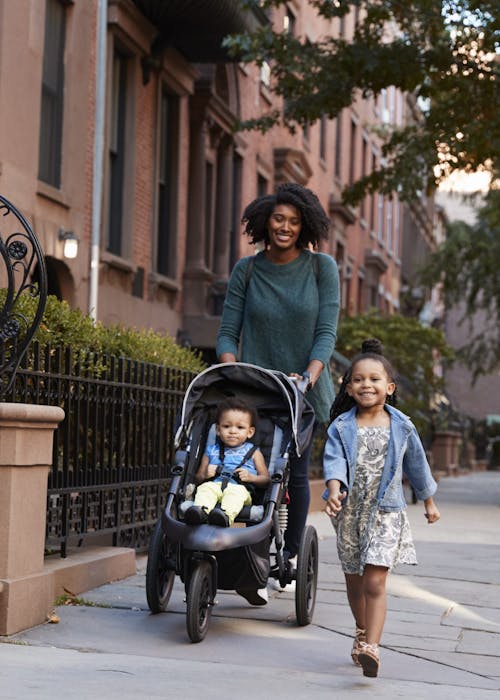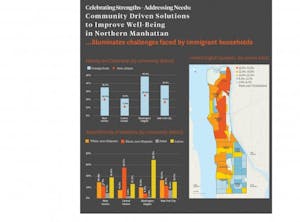

The Rich Diversity of Northern Manhattan
Insights
May 10, 2018

So much of what makes New York a vibrant, culturally diverse city can be found in northern Manhattan. The area is home to the second-highest share of foreign-born residents in New York City, with nearly half of residents born outside the country. The mix of languages, cultural activities, and ideas present on every block in the area creates the energy that makes New York a world-renowned city.
Despite the strengths this diversity brings, northern Manhattan residents also face real challenges in the current political climate. Our new report, Celebrating Strengths, Addressing Needs: Community Driven Solutions To Improve Well-Being In Northern Manhattan, found that foreign-born residents of the area are feeling increasingly anxious over anti-immigrant sentiment at the federal level.
As the federal administration significantly tightens restrictions on all forms of immigration, our report found that “the President’s words and actions regarding immigrants [have] made even lawful permanent residents fearful to access even basic services to which they, or their children who were born in the United States, are entitled.”
That problem is compounded by the linguistic isolation many northern Manhattan families experience. Nearly forty percent of Washington Heights residents are limited English speakers, and in nearly a quarter of households, no one over the age of 14 speaks English “very well.”* This not only makes it difficult for parents and caregivers to help with homework and support their children’s education, but also makes understanding information on community resources and accessing needed services more challenging.
Despite numerous barriers to well-being that they face, the youth, parents and service providers we spoke with are committed to advancing solutions to strengthen their families and community.
Through our participatory research, community members informed several recommendations in our report. They include:
- More opportunities to be economically secure and upwardly mobile. Service providers and residents recommended creating greater access to financial literacy, economic empowerment and entrepreneurship resources for all households, especially immigrant families. Residents also expressed the need for on-site child care services for caregivers enrolled in adult education, literacy or ESL courses.
- Greater protections in maintaining stable housing. Service providers and residents suggested that existing efforts by the city to provide free legal counsel to residents facing eviction and harassment from landlords should be expanded to more zip codes in northern Manhattan.
- More equitable distribution of resources in schools and more opportunities for parental involvement in their children’s education. Residents said they wanted more free or low-cost homework help programs, especially to support families with limited English proficiency. They also called for the creation of more mixed-use spaces in the community for play and homework help that could alleviate stressors related to household overcrowding that some immigrant families experience. They also desired more support to meaningfully participate in school activities, such as translated informational materials and interpretation at events.
- Eliminate access barriers to needed and desired programs and services. Residents desired greater access to information about programs including an all-in-one resource center that could help families meet a variety of needs and interests, including arts programs and recreational activities.
CCC is hopeful that the report and its recommendations can inform local advocacy as well as citywide policy priorities to make New York City a fairer and more equitable city for all children and families.
*In the annual American Community Survey, the United States Census Bureau gathers data on language for residents who are five years of age or older. Residents are asked if they speak a language other than English at home; those who do are asked to respond whether they speak English very well, well, not well, or not at all. If a respondent does not speak only English or does not speak English very well, they are considered a limited English speaker. If no one in the household age 14 or over speaks only English or speaks English very well, it is considered a linguistically isolated household.


